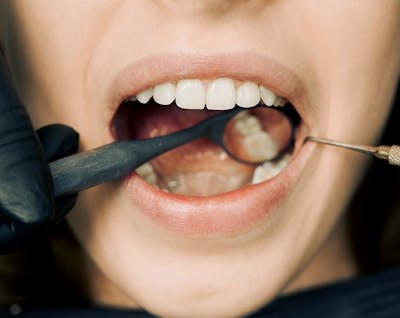A bright, healthy smile goes beyond just brushing your teeth twice a day. Regular dental cleanings are essential for maintaining good oral health, but sometimes a more intensive approach is needed. This is where deep teeth cleaning, also known as scaling and root planing, comes in.
What is Deep Cleaning?
Unlike a routine dental cleaning that focuses on removing plaque and tartar from above the gum line, deep cleaning tackles the buildup below the gum line. This area is more difficult to reach with brushing and flossing alone, allowing plaque to harden into calculus (tartar). When left untreated, this buildup can irritate the gums, leading to gingivitis (inflammation of the gums) and eventually periodontitis (gum disease). Periodontitis can damage the bones supporting your teeth and even lead to tooth loss.
Deep cleaning is a two-part procedure:
- Scaling: This removes plaque and tartar from both above and below the gum line using ultrasonic scalers or manual tools.
- Root Planing: This smooths the rough surfaces of the tooth roots, making it harder for plaque to adhere in the future and allowing the gums to reattach tightly to the teeth.
Who Needs Deep Cleaning?
Deep cleaning is typically recommended for patients with gum disease, particularly those with moderate to advanced stages (periodontitis). Signs that you might need deep cleaning include:
- Red, swollen, or bleeding gums
- Persistent bad breath
- Loose teeth
- Receding gums
Your dentist will assess your individual needs and recommend deep cleaning if they believe it will benefit your oral health homeimprovementweb.de/.
What to Expect During Deep Cleaning
Deep cleaning is usually performed over two appointments, with one side of the mouth cleaned at each visit. This allows for local anesthesia to be used for comfort during the procedure. Here’s a general breakdown of what to expect:
- Preparation: Your dentist will examine your teeth and gums and take X-rays to assess the severity of your gum disease.
- Anesthesia: Local anesthesia is often used to numb the area being treated.
- Scaling: The dentist or hygienist will use ultrasonic scalers or manual tools to remove plaque and tartar buildup from above and below the gum line.
- Root Planing: The tooth root surfaces are smoothed to discourage future plaque buildup and promote gum reattachment.
- Antibiotics: In some cases, your dentist may prescribe antibiotics to help fight infection.
- Aftercare Instructions: You will be given specific instructions on caring for your teeth and gums after deep cleaning, including proper brushing and flossing techniques.
Recovery After Deep Cleaning
Following deep cleaning, your gums may be sore and sensitive for a few days. You can manage discomfort with over-the-counter pain relievers and a cold compress applied to your cheek. It’s important to maintain good oral hygiene practices after the procedure to promote healing and prevent future problems.
Deep Cleaning vs. Regular Cleaning
Deep cleaning is a more specialized procedure compared to a regular dental cleaning. Here’s a quick comparison:
| Feature | Regular Cleaning | Deep Cleaning |
|---|---|---|
| Focus | Plaque and tartar removal above the gum line | Plaque and tartar removal above and below the gum line |
| Anesthesia | Not typically used | Local anesthesia often used |
| Number of Appointments | Typically one appointment | Usually two appointments |
| Time per Appointment | 30-60 minutes | 1-2 hours per appointment |
| Purpose | Preventative care | Treatment for gum disease |
Conclusion
Deep cleaning is a valuable tool for treating gum disease and promoting long-term oral health. If you experience any signs of gum problems, schedule an appointment with your dentist to discuss if deep cleaning is right for you. With proper care and regular dental visits, you can maintain a healthy smile for years to come.



